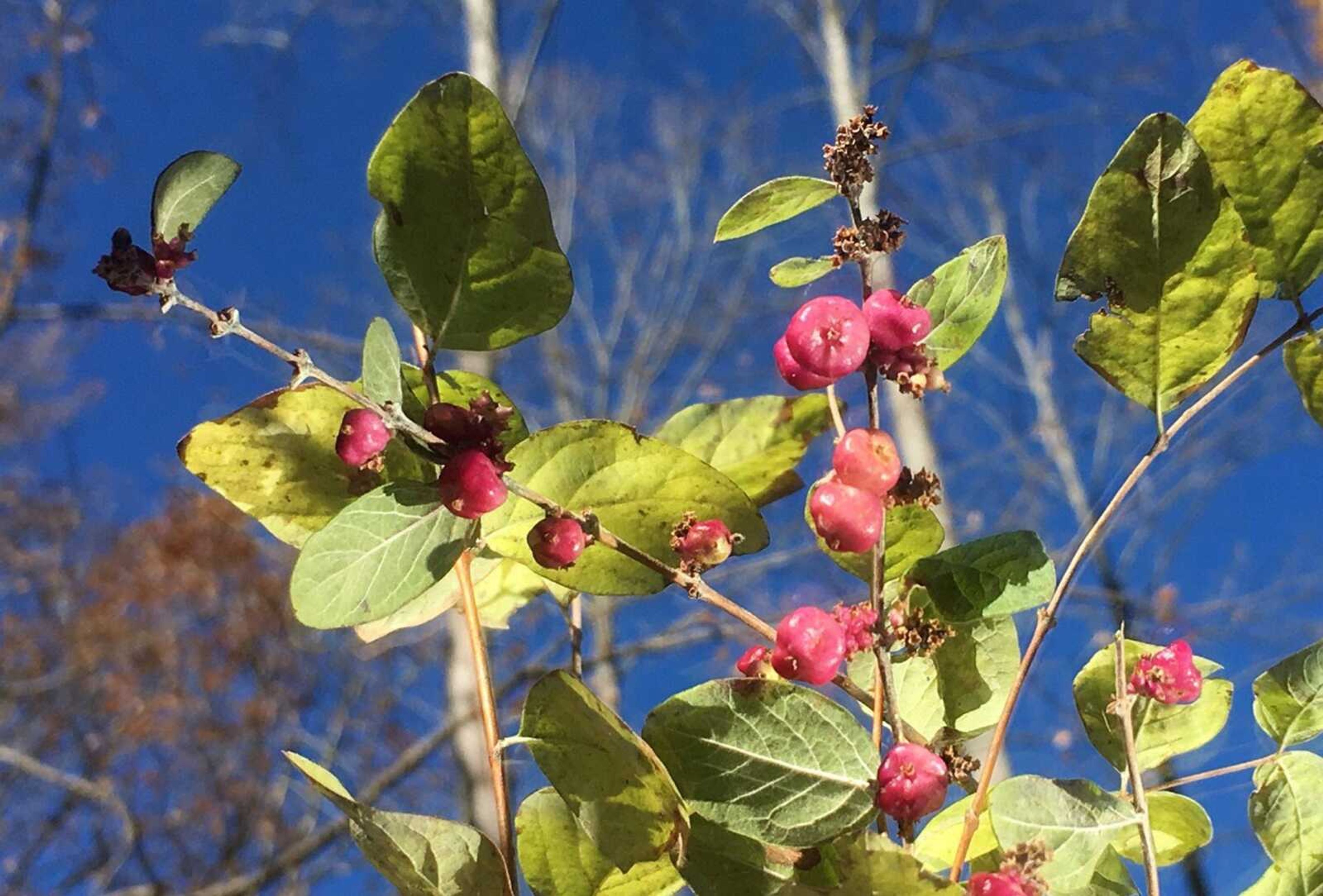A little pink beauty for winter
During summer, the coralberry is an inconspicuous little bush with drooping limbs. Opposing oval-shaped leaves cascade down the limbs, and clusters of small flowers bloom on the undersides of the limbs out of sight of the casual passerby. Autumn finds the coralberry dropping its leaves and revealing its small, pinkish-colored berries. Songbirds such as robins and catbirds enjoy the berries as welcome wintertime food...
By Aaron Horrell
During summer, the coralberry is an inconspicuous little bush with drooping limbs. Opposing oval-shaped leaves cascade down the limbs, and clusters of small flowers bloom on the undersides of the limbs out of sight of the casual passerby.
Autumn finds the coralberry dropping its leaves and revealing its small, pinkish-colored berries. Songbirds such as robins and catbirds enjoy the berries as welcome wintertime food.
This native American woody-stemmed plant usually grows to about 3 feet tall, and sometimes more than 5 feet. It is a cousin of the native coral honeysuckle and looks somewhat like a smaller, scragglier version of the American beautyberry.
Coralberry bushes prefer semishaded areas such as fence rows, old fields and edges of wood lots.
Connect with the Southeast Missourian Newsroom:
For corrections to this story or other insights for the editor, click here. To submit a letter to the editor, click here. To learn about the Southeast Missourian’s AI Policy, click here.










